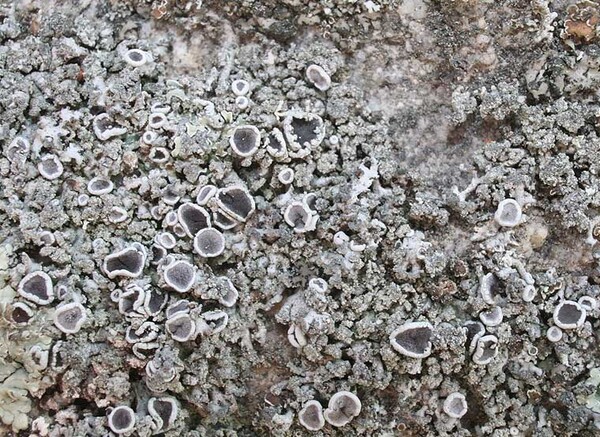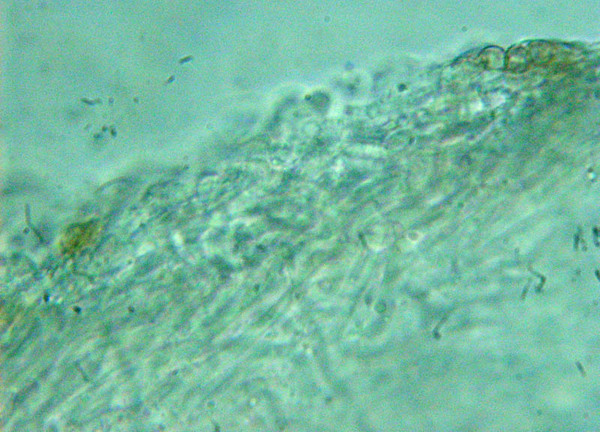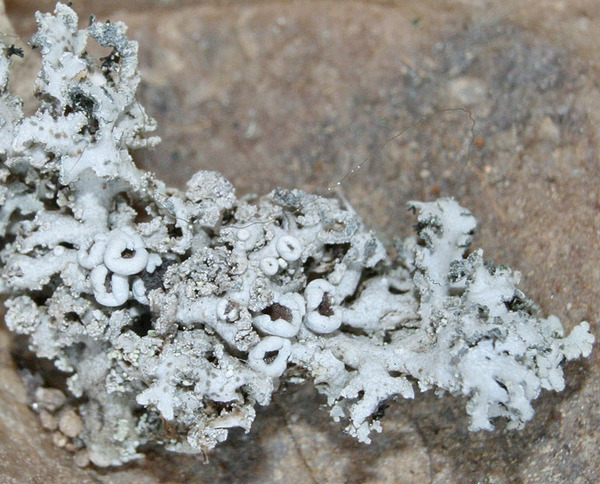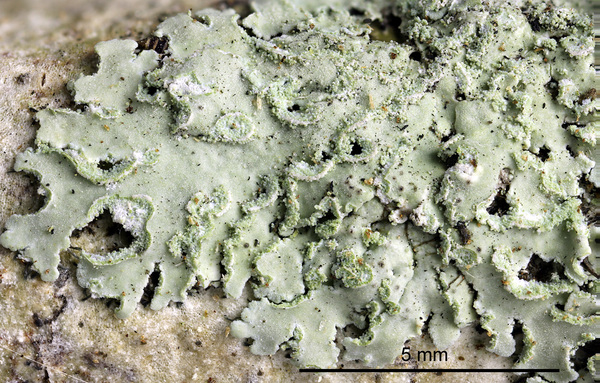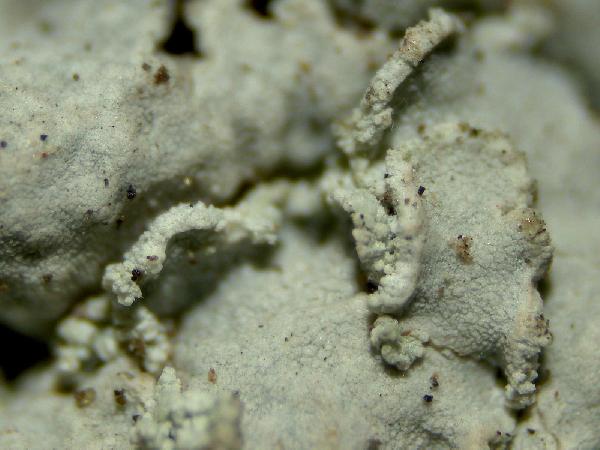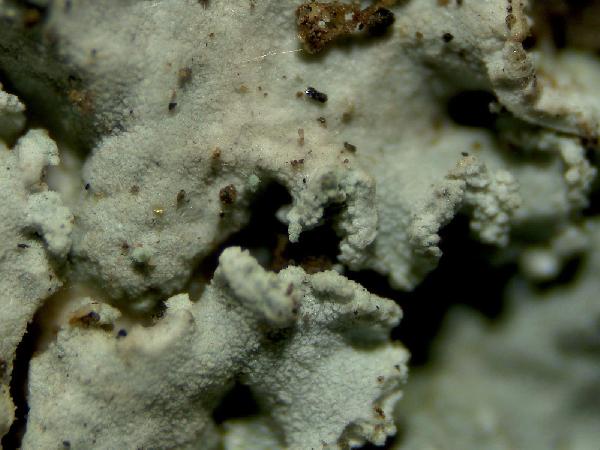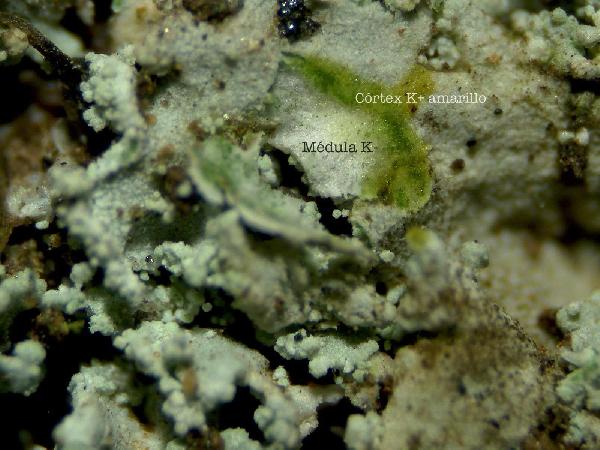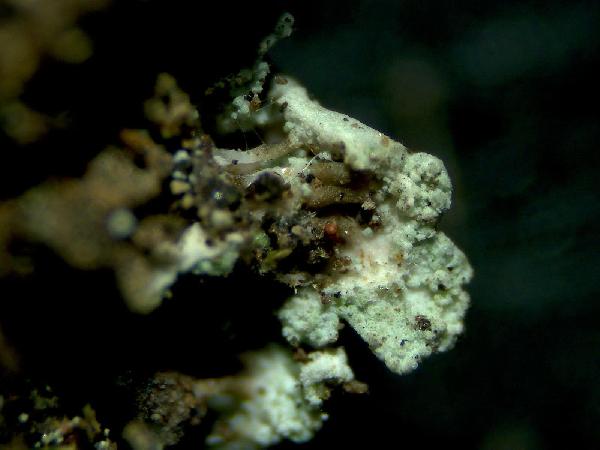Physcia dimidiata (Arnold) Nyl.
Flora, 64: 573, 1881. Basionym: Parmelia pulverulenta var. dimidiata Arnold - Flora, 47: 594, 1864.
Synonyms: Parmelia albinea var. dimidiata (Arnold) Jatta; Physcia dimidiata var. ornata (Nádv.) Moberg?
Distribution: N - TAA (Nascimbene & al. 2007b), Lomb, Piem (Castino 2004), VA (Piervittori & Isocrono 1999), Emil (Valcuvia & Delucchi 2001, Fariselli & al. 2020), Lig. C - Marc (Nimis & Tretiach 1999), Laz (Munzi & al. 2012), Abr, Sar (Zedda 2002, Rizzi & al. 2011, Di Nuzzo & al. 2022). S - Camp, Pugl, Si (Ravera & al. 2020b).
Description: Thallus foliose, heteromerous, dorsiventral, narrow-lobed, forming irregular to rarely orbicular, up to 2(-3) cm wide rosettes, several thalli sometimes merging to cover larger surfaces. Lobes overlapping, usually 0.5-1.2(-1.5) mm wide, rarely wider, eroded-crenulate and minutely lobulate at tips, the upper surface brownish grey to cream-coloured, emaculate, markedly and densely pruinose, with granular soredia arranged in elongated, marginal soralia which, in old specimens, may extend to the central parts; lower surface whitish to brownish, with pale, mostly simple rhizines. Upper cortex paraplectenchymatous; medulla white; lower cortex indistinctly prosoplectenchymatous. Apothecia very rare, lecanorine, up to 2 mm across, with a white-pruinose disc and an often sorediate thalline margin. Epithecium brown; hymenium and hypothecium colourless; paraphyses slender, simple or forked in upper part, the apical cells clavate, with a thin, dark brown cap. Asci 8-spored, clavate, the K/I+ blue tholus penetrated by a faintly amyloid apical cushion with parallel or diverging flanks, the wall K/I-, surrounded by a K/I+ blue outer layer, Lecanora-type. Ascospores 1-septate, brown, ellipsoid, 17-23 x 8-12 µm, the wall thickened at apex and at septum, Physcia-type. Photobiont chlorococcoid. Spot tests: upper cortex K+ yellow, C-, KC-, P- or P+ faintly yellow; medulla K-, C-, KC-, P-. Chemistry: upper cortex with atranorin. Note: a Mediterranean to mild-temperate, probably holarctic lichen found on steeply inclined surfaces of basic siliceous rocks and of calciferous sandstones, on old walls, more rarely on basal parts of old trees, mostly below the montane belt.
Growth form: Foliose, narrow lobed
Photobiont: green algae other than Trentepohlia
Reproductive strategy: mainly asexual, by soredia, or soredia-like structures (e.g. blastidia)
On otherwise dry surfaces with short periods of water seepage after rain
Commonnes-rarity: (info)
Alpine belt: absent
Subalpine belt: absent
Oromediterranean belt: absent
Montane belt: absent
Submediterranean belt: very rare
Padanian area: absent
Humid submediterranean belt: rare
Humid mediterranean belt: very rare
Dry mediterranean belt: absent
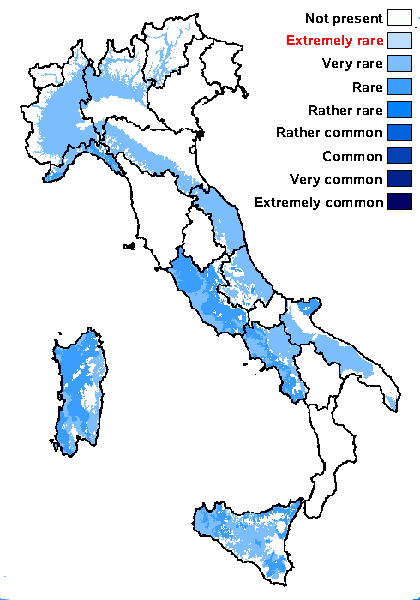
Predictive model
Herbarium samples
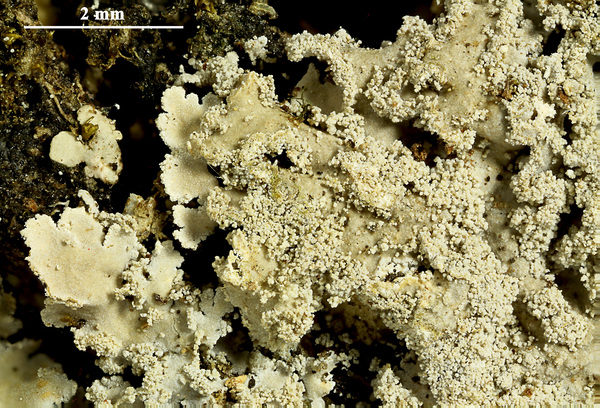

Felix Schumm - CC BY.SA 4.0
[13157], Vietnam, Nordvietnam, Hué, Kaiserpalast. Leg. F. Schumm, 26.04.2007, det. A. Aptroot 2009
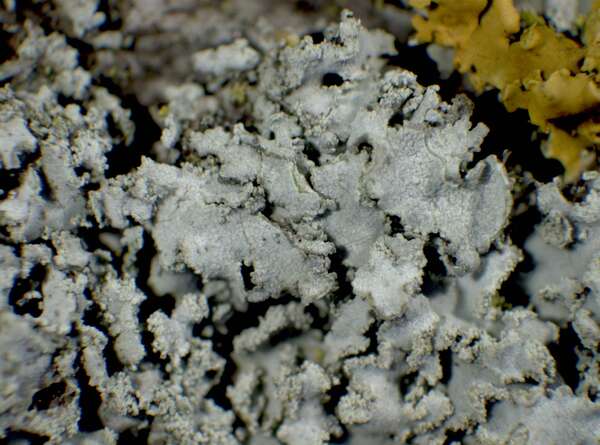

P.L. Nimis; Owner: Department of Life Sciences, University of Trieste
Herbarium: TSB (35569)
2002/01/21
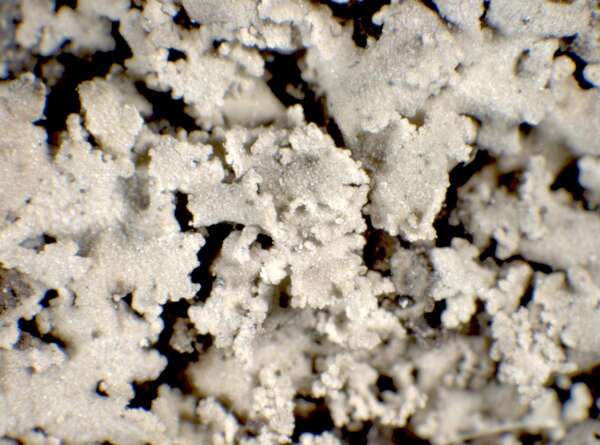

P.L. Nimis; Owner: Department of Life Sciences, University of Trieste
Herbarium: TSB (3203)
2001/12/05
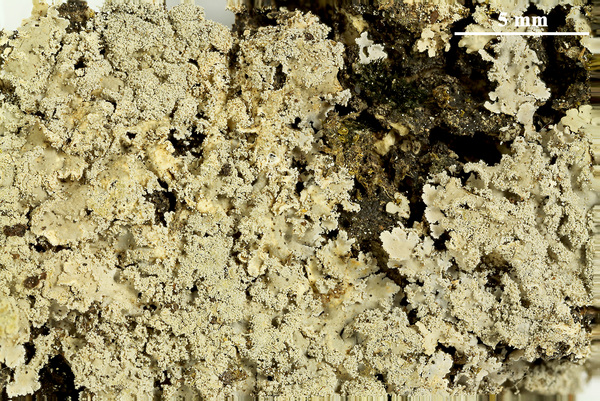

Felix Schumm - CC BY.SA 4.0
[13157], Vietnam, Nordvietnam, Hué, Kaiserpalast. Leg. F. Schumm, 26.04.2007, det. A. Aptroot 2009
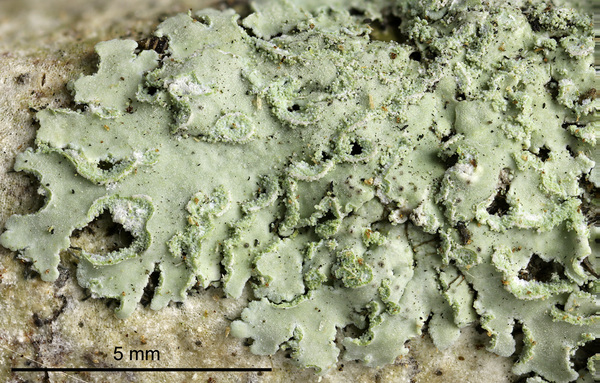

Felix Schumm - CC BY.SA 4.0
[14679], Seychellen, Mahe, W-Küste, Barbarons Estate, 4°43.214' S, 55°28.839' E, 17 m. Leg. F. Schumm & J.-P. Frahm, 11.10.2008, det. A. Aptroot, 2008
Growth form: Foliose, narrow lobed
Photobiont: green algae other than Trentepohlia
Reproductive strategy: mainly asexual, by soredia, or soredia-like structures (e.g. blastidia)
On otherwise dry surfaces with short periods of water seepage after rain
Commonnes-rarity: (info)
Alpine belt: absent
Subalpine belt: absent
Oromediterranean belt: absent
Montane belt: absent
Submediterranean belt: very rare
Padanian area: absent
Humid submediterranean belt: rare
Humid mediterranean belt: very rare
Dry mediterranean belt: absent

Predictive model
| Herbarium samples |


Felix Schumm - CC BY.SA 4.0
[13157], Vietnam, Nordvietnam, Hué, Kaiserpalast. Leg. F. Schumm, 26.04.2007, det. A. Aptroot 2009


P.L. Nimis; Owner: Department of Life Sciences, University of Trieste
Herbarium: TSB (35569)
2002/01/21


P.L. Nimis; Owner: Department of Life Sciences, University of Trieste
Herbarium: TSB (3203)
2001/12/05


Felix Schumm - CC BY.SA 4.0
[13157], Vietnam, Nordvietnam, Hué, Kaiserpalast. Leg. F. Schumm, 26.04.2007, det. A. Aptroot 2009


 INDEX FUNGORUM
INDEX FUNGORUM
 GBIF
GBIF
 DOLICHENS
DOLICHENS

